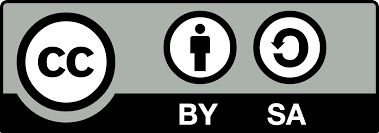Rewards in Early Childhood Classroom: Short-Term Gains, Long-Term Costs?
Main Article Content
Maulida Sari
Rizka Amalia
The use of rewards as a motivational strategy has long been applied in education, but its effectiveness and impact on children's intrinsic motivation are still crucial debates. Therefore, this study aims to analyze the meaning of rewards in increasing early childhood learning motivation in Islamic Kindergartens, and to understand its implications for educational practices Initial observations at TK Anak Islam indicate the existence of diverse reward-giving practices, but an in-depth understanding of children's perceptions and the effectiveness of rewards in triggering sustainable motivation is still limited. The method used in this study was qualitative-descriptive, with the aim of understanding how rewards are interpreted and how they influence learning motivation in early childhood. The study was conducted at TK Anak Islam, which implements a reward-based learning system to increase learning motivation in early childhood. The results of the study identified four main types of rewards: material (stickers, stationery), social (verbal praise, applause), activity/privilege (opportunity to choose, additional playtime), and symbolic (achievement cards, star boards). Verbal praise is the form most often used and considered effective by teachers.Research recommendations emphasize the importance of reward variation, consistency, timely delivery, and a focus on the child's effort process in reward-giving strategies.
Asirah, A., Saputra, N., & Rahman, F. (2023). Investigating the Relationship between Students' Wellbeing and Reading Achievement: A PISA 2018 Analysis of Indonesian Students' Reading Comprehension. PAROLE: Journal of Linguistics and Education, 13(2), 49-60.
Azzarah, A. (2024). Positive Story: Building Self-Confidence in Elementary School Children Through Reinforcement. Psikoborneo: Jurnal Imiah Psikologi, 12(4), 444-448. http://dx.doi.org/10.30872/psikoborneo.v12i4.16597
Deci, E. L., & Ryan, R. M. (1985). Intrinsic motivation and self-determination in human behavior. Plenum.
Dweck, C. S. (2006). Mindset: The New Psychology of Success. Random House.
Drake, K. R., & Nelson, G. (2021). Natural rates of teacher praise in the classroom: A systematic review of observational studies. Psychology in the Schools, 58(12), 2404-2424. https://doi.org/10.1002/pits.22602
Hattie, J. (2017). Visible Learning for Teachers: Maximizing Impact on Learning. Routledge.
Ilham, M., Rahman, F., Kholid, M., & Sari, D. D. (2024). The Efficacy of e-Guru Application in Boosting Learning Effectiveness: Does It Deliver Results?. International Journal of Social Learning (IJSL), 4(2), 197-209. https://doi.org/10.47134/ijsl.v4i2.257
Ilham, M., Rahman, F., Sari, D. D., & Annisaturrahmi, A. (2023). Enhancing Preschool English Vocabulary Through Multimedia Tools: Insights from a Mixed-Methods Study. Al-Athfal: Jurnal Pendidikan Anak, 9(2), 93-102. https://doi.org/10.14421/al-athfal.2023.92-02
Iqbal, M., Auliana, A., Dinda Sari, D., Rahman, F., & Haekal, M. (2023). Unveiling The Linguistic Journey: Investigating Word Class Acquisition In 3-5 Year Old Children Through A Qualitative Approach. Child Education Journal, 5(1), 61–73. https://doi.org/10.33086/cej.v5i1.4234
Isenberg, J. P., & Jalongo, M. R. (2014). Creative Thinking and Arts-Based Learning: Preschool Through Fourth Grade. Pearson.
Kohn, A. (1993). Punished by rewards: The trouble with gold stars, incentive plans, A's, praise, and other bribes. Houghton Mifflin.
Lepper, M. R., Greene, D., & Nisbett, R. E. (1973). Undermining children's intrinsic interest with extrinsic reward: A test of the "overjustification" hypothesis. Journal of Personality and Social Psychology, 28(1), 129–137. https://doi.org/10.1037/h0035519
Mayer, R. E. (2009). Multimedia Learning (2nd ed.). Cambridge University Press.
Michaelsen, M. M., & Esch, T. (2023). Understanding health behavior change by motivation and reward mechanisms: a review of the literature. Frontiers in Behavioral Neuroscience, 17, 1151918. https://doi.org/10.3389/fnbeh.2023.1151918
Munafiah, N. U., Novianti, C., & Ferianto, F. (2023). The Position of Teachers in the Development of Early Childhood Character Education. Al-Athfaal: Jurnal Ilmiah Pendidikan Anak Usia Dini, 6(1), 54-62. https://doi.org/10.24042/ajipaud.v6i1.15884
NAEYC (National Association for the Education of Young Children). (2009). Developmentally Appropriate Practice in Early Childhood Programs Serving Children from Birth Through Age 8. National Association for the Education of Young Children.
OECD. (2017). Starting Strong 2017: Key OECD Indicators on Early Childhood Education and Care. OECD Publishing. https://doi.org/10.1787/9789264276116-en)
Oktaviana, Y., Azzahra, R., & Saadah, S. (2025). The Influence of the Learning Environment in Shaping Early Childhood Learning Motivation. Seulanga: Jurnal Pendidikan Anak, 6(1), 1-12. https://doi.org/10.47766/seulanga.v6i1.6070
Ormrod, J. E. (2018). Educational Psychology: Developing Learners (9th ed.). Pearson.
Piaget, J. (1969). The psychology of the child. Basic Books.
Ryan, R. M., & Weinstein, N. (2009). Undermining quality motivation and fostering dependency through the use of rewards. In E. L. Deci & R. M. Ryan (Eds.), The Oxford handbook of human motivation (pp. 537–550). Oxford University Press.
Sigalingging, R., Nababan, H., Putra, A., & Nababan, M. (2023). Enhancing learning motivation in elementary schools: The impact and role of rewards. Jurnal Ilmu Pendidikan Dan Humaniora, 12(1), 01-13. https://doi.org/10.35335/jiph.v12i1.27
Santrock, J. W. (2018). Child Development (15th ed.). McGraw-Hill Education.
Sari, D. D., Ilham, M., Fuadi, N., & Nurviani, R. (2024). The Implementation Learning Media Based on a Culture to Develop Student Character. Journal of Islamic Education Students (JIES), 4(1), 63-70. http://dx.doi.org/10.31958/jies.v4i1.12109
Skinner, B. F. (1953). Science and Human Behavior. Free Press.
Slavin, R. E. (2018). Educational Psychology: Theory and Practice (12th ed.). Pearson.
Sugiyono. (2018). Metode Penelitian Kuantitatif, Kualitatif, dan R&D. Alfabeta.
Suwanto, S., & Rahman, F. (2022). The Implementation of TEYL in Indonesia Revisited: A Study at Primary Schools in Bandung. International Journal of Education, Language, and Religion, 4(1), 19-30. DOI: https://doi.org/10.35308/ijelr.v4i1.5462
Undang-Undang Republik Indonesia Nomor 20 Tahun 2003 tentang Sistem Pendidikan Nasional. (2003).
Utami, D. (2019). Pemanfaatan Media Interaktif untuk Meningkatkan Perkembangan Sosial Emosional Anak Usia Dini. Jurnal Media Pendidikan.
Veryawan, V., & Mawarni, D. (2025). Paper Quilling: How it Applies to Early Childhood Fine Motor Development. Seulanga: Jurnal Pendidikan Anak, 6(1), 25-36. https://doi.org/10.47766/seulanga.v6i1.5123
Vygotsky, L. S. (1978). Mind in society: The development of higher psychological processes. Harvard University Press.
Zurriyati, Z., Perangin-angin, A. B., & Rahman, F. (2023). Exploring Al-Ghazali’s concept of education: A study of speech acts through English language lens. Englisia: Journal of Language, Education, and Humanities, 10(2). https://doi.org/10.22373/ej.v10i2.17515




